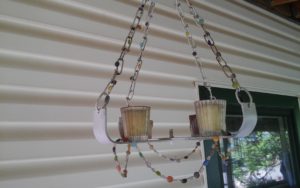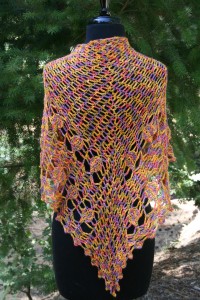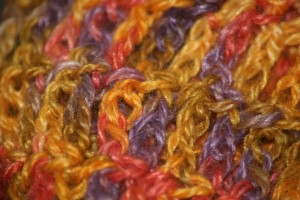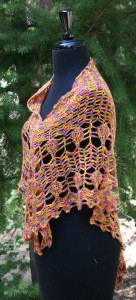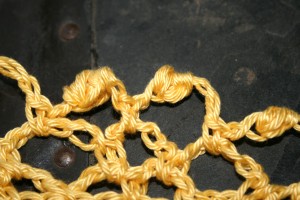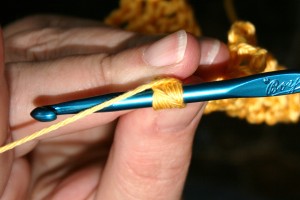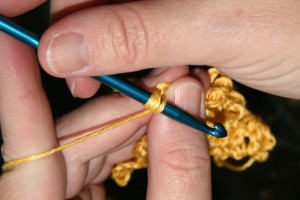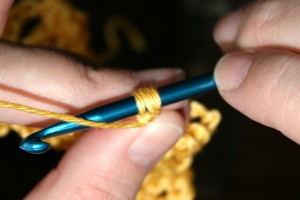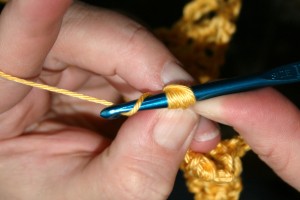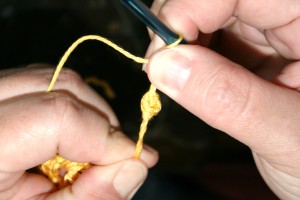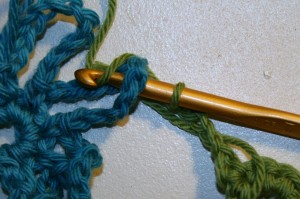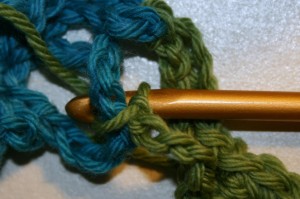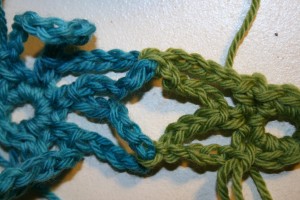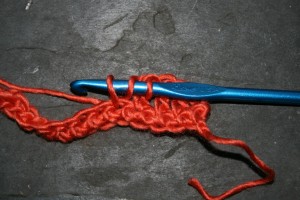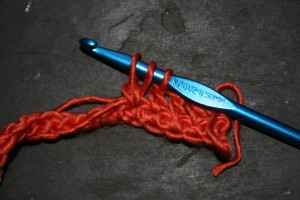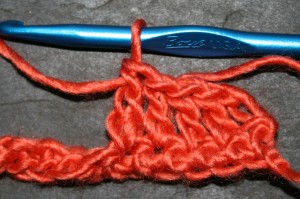 A few years back my husband put together some bent iron and a couple of chains creating a “chandelier” of sorts. I was grateful for his effort, but needed to add some extra embellishments. I thought as the season changes to one in which we begin enjoying the great outdoors later in the hours of the day, that I would share how I took a couple of ideas and now enjoy the outdoors after the sunset.
A few years back my husband put together some bent iron and a couple of chains creating a “chandelier” of sorts. I was grateful for his effort, but needed to add some extra embellishments. I thought as the season changes to one in which we begin enjoying the great outdoors later in the hours of the day, that I would share how I took a couple of ideas and now enjoy the outdoors after the sunset.
Crochet helped me once again in repurposing my new make shift light source. After painting the metal white, I felt that it needed something more. I had been playing with beads and jewelry wire, creating choker necklaces, and as it happened it became an inspiration. I strung several colors of beads on a long spool of wire and then simply began to create a crochet chain. I stretched the stitch after it was made, causing the wire to collapse more around the bead, this chain now adorns the metal by draping between the cross sections, and I created an additional chain of beads to weave through the chain that it is suspended from. It added just enough color and whimsy. So complete the project I added a few votive candles and holders, and now I have a beautiful art piece that graces the seating area of my back porch. It is nice to spend a quite spring evening outside by this soft light that has just a little something extra, brought together with crochet.
I have often considered creating more of these beaded chains, for adornment in other places, maybe I will have to create one to drape from my daughter bedroom window. Various beads can offer different effects and looks, but I think I like the color of these glass beads that allow the light through they almost have a glow about them.

